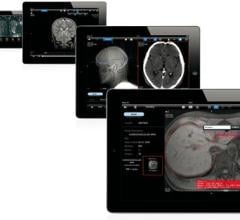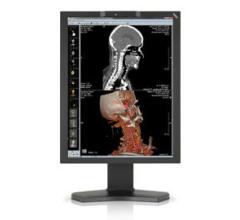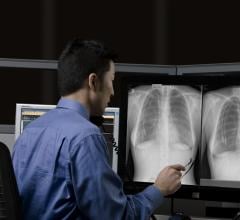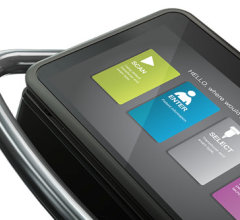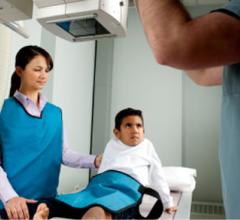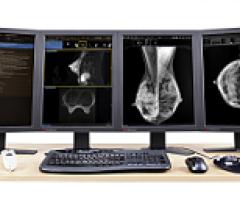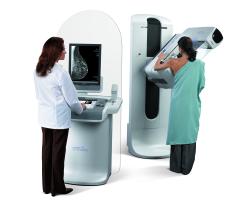A University of Colorado Cancer Center study, published in the journal Physics in Medicine and Biology, shows that endorectal balloons commonly used during precise radiation treatment for prostate cancer can deform the prostate in a way that could make radiation miss its mark.
Lantheus Medical Imaging, Inc., a developer, manufacturer and distributor of diagnostic imaging agents, announced preliminary results from the first of two planned Phase 3 trials to assess the diagnostic efficacy of flurpiridaz F 18, an imaging agent used in positron emission tomography (PET) myocardial perfusion imaging (MPI) for the detection of coronary artery disease (CAD).
No law prevents doctors from freely prescribing U.S. Food and Drug Administration (FDA)-approved drugs and devices for off-label uses, yet regulators continue to aggressively pursue civil and criminal enforcement of perceived violations, warns Patrick J. Hurd, senior counsel with LeClairRyan in Washington, D.C. and Norfolk, Va. in the November 2013 edition of Westlaw Journal Pharmaceutical.
Radiology departments have many different needs and face a wide variety of challenges that can impact their departments ...
Virtual Radiologic (vRad), a radiology practice, announced the release of its radiology patient care (RPC) Indices, the first set of findings-based national and peer group radiology benchmarking metrics.
Intelerad Medical Systems announced the launch of InteleConnect Patterns, an optional service built into the InteleConnect Referring Physician Portal that provides radiology groups with key analytics regarding their base of referring physicians.
Agfa HealthCare announced that it is launching the next generation of its MUSICA (Multi-Scale Image Contrast Amplification) image processing software with new technology improvements that enhance both image quality and workflow for radiographers and radiologists at the upcoming Radiological Society of North America Annual Meeting (RSNA 2013) in Chicago.
Despite decades of progress in breast imaging, one challenge continues to test even the most skilled radiologists ...
Aycan will feature its mobile iPad application, which is designed to quickly, easily and securely transfer DICOM images from hospitals and imaging centers to on-call and other radiologists and referring physicians with an iPad, at the Radiological Society of North America Annual Meeting (RSNA 2013) in Chicago.
NEC Display Solutions will be offering additional insight and demonstrations of its latest products including the MultiSync MD210C2 medical-grade monitor, built for the displaying and viewing of digital images for diagnosis by physicians, at the Radiological Society of North America Annual Conference (RSNA 2013) in Chicago.
Personnel of Wyle, a provider of engineering, scientific and technical service to the U.S. Department of Defense (DoD), at the Johnson Space Center have selected Fujifilm Medical Systems U.S.A. Inc. to implement Synapse Radiology and Synapse Cardiovascular to support NASA’s in-flight as well as ground-based clinical care operations.
Bayer Radiology’s Barbara Ruhland and Thom Kinst discuss how radiology departments can address the many different ...
The Technology House (TTH), a single-source provider of custom plastic and metal prototypes and production parts, has used a rapid prototyping process to help recreate the face of a 2,000-year-old mummy, allowing the Ohio Historical Society to learn as much as possible about the mummy’s past.
National Imaging Associates (NIA), a subsidiary of Magellan Health Services, announced a clinical decision support application designed to provide emergency department physicians with objective, educational guidance related to advanced imaging.
Carestream’s newest version of Image Suite Software offers a flexible image acquisition, processing and storage platform that now supports Carestream wireless digital and computed radiography (DR and CR) imaging systems and an optional mini-PACS (picture archiving and communication system).
eHealth Saskatchewan plays a vital role in providing IT services to patients, health care providers, and partners such ...
Fujifilm SonoSite Inc., specialists in designing ultrasound tools and education for access to point-of-care visualization, announced that it received 510(k) clearance from the U.S. Food and Drug Administration (FDA) for its newest generation of point-of-care (POC) ultrasound, the X-Porte Ultrasound Kiosk.
The U.S. Food and Drug Administration (FDA) has approved three new pediatric fluoroscopy educational modules developed by an Image Gently, Society for Pediatric Radiology/Alliance for Radiation Safety in Pediatric Imaging workgroup for distribution.
Zevacor Molecular, a healthcare firm that manufactures and distributes positron emissions tomography (PET) and single photon emission computed tomography (SPECT) radiopharmaceuticals, has purchased the first 70 MeV Cyclotron dedicated to medical use in the United States from Ion Beam Applications, S.A. (IBA).
Paxeramed, a medical imaging solution developer based in Boston, has launched the industry's first medical imaging sharing module to social media.
Intelerad Medical Systems, a developer in medical imaging picturing archiving and communication systems (PACS), radiology information systems (RIS) and workflow solutions, announced the launch of InteleRIS 8.224, the latest version of their RIS.
Hologic Inc., a developer, manufacturer and supplier of diagnostic products, medical imaging systems and surgical products with an emphasis on serving the healthcare needs of women, announced that two healthcare organizations recently recognized 3-D mammography technology with important industry awards. 3-D mammography, a technology pioneered by Hologic, was named the “Hottest Clinical Procedure in 2013” by AuntMinnie.com, the leading worldwide radiology web content provider.
University of Colorado Cancer Center researchers used data from 4,276 cases of male breast cancer and 718,587 cases of female breast cancer to show that the disease is treated differently in men than in women. Specifically, male breast cancer is treated with mastectomy more often than female breast cancer, and in cases in which locally advanced female breast cancer is commonly treated with radiation, the treatment is less used in the male disease. Results are published in this month's issue of the International Journal of Radiation Oncology, Biology and Physics.
Cerner’s RadNet Radiology Information System (RIS) provides the tools to work more efficiently while providing patients with a positive personal experience and delivering superior care.

 November 14, 2013
November 14, 2013 





